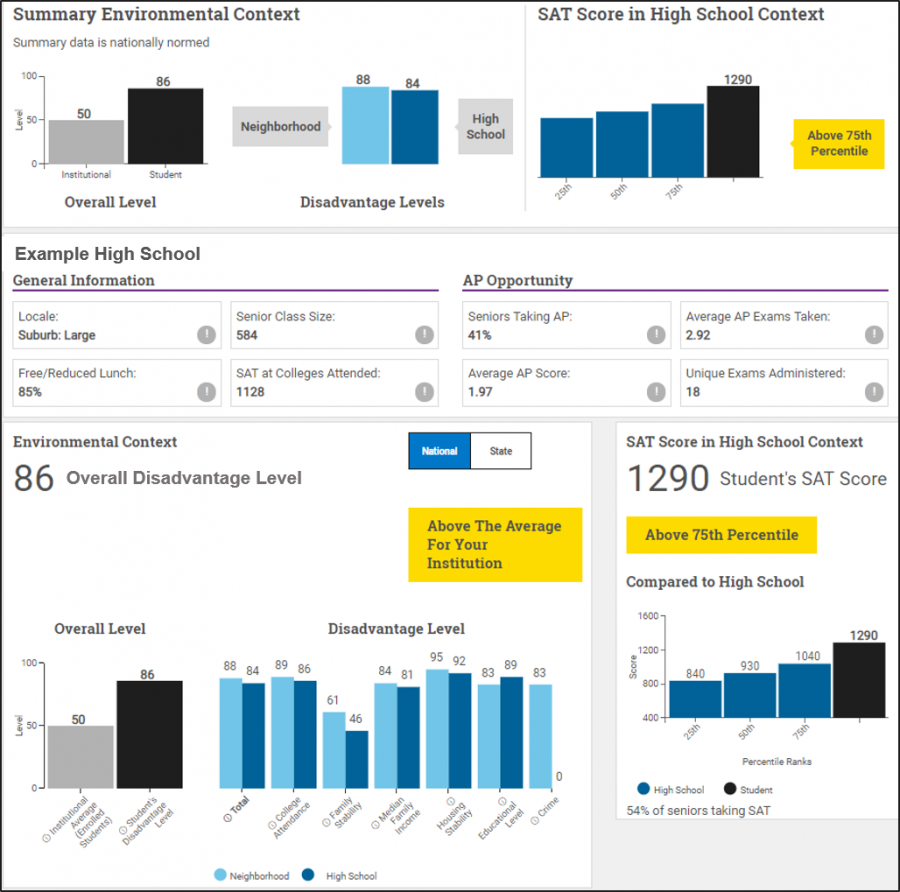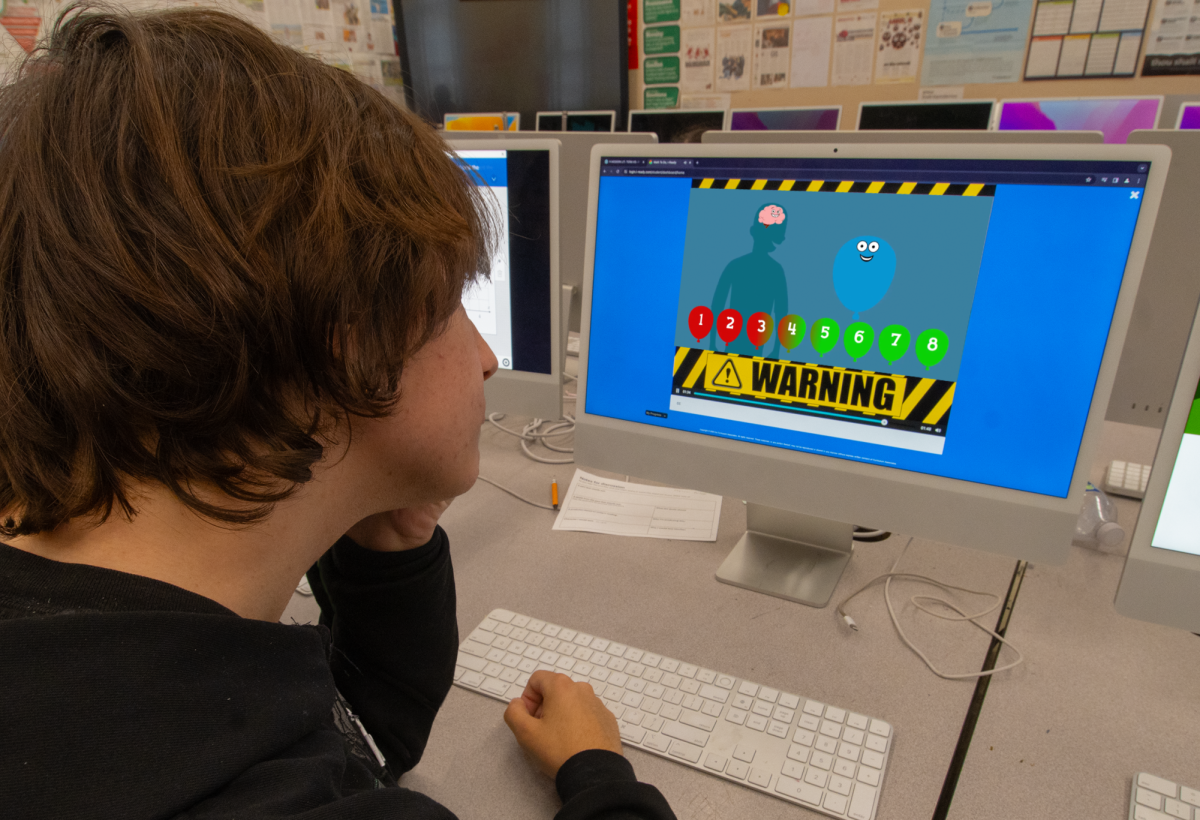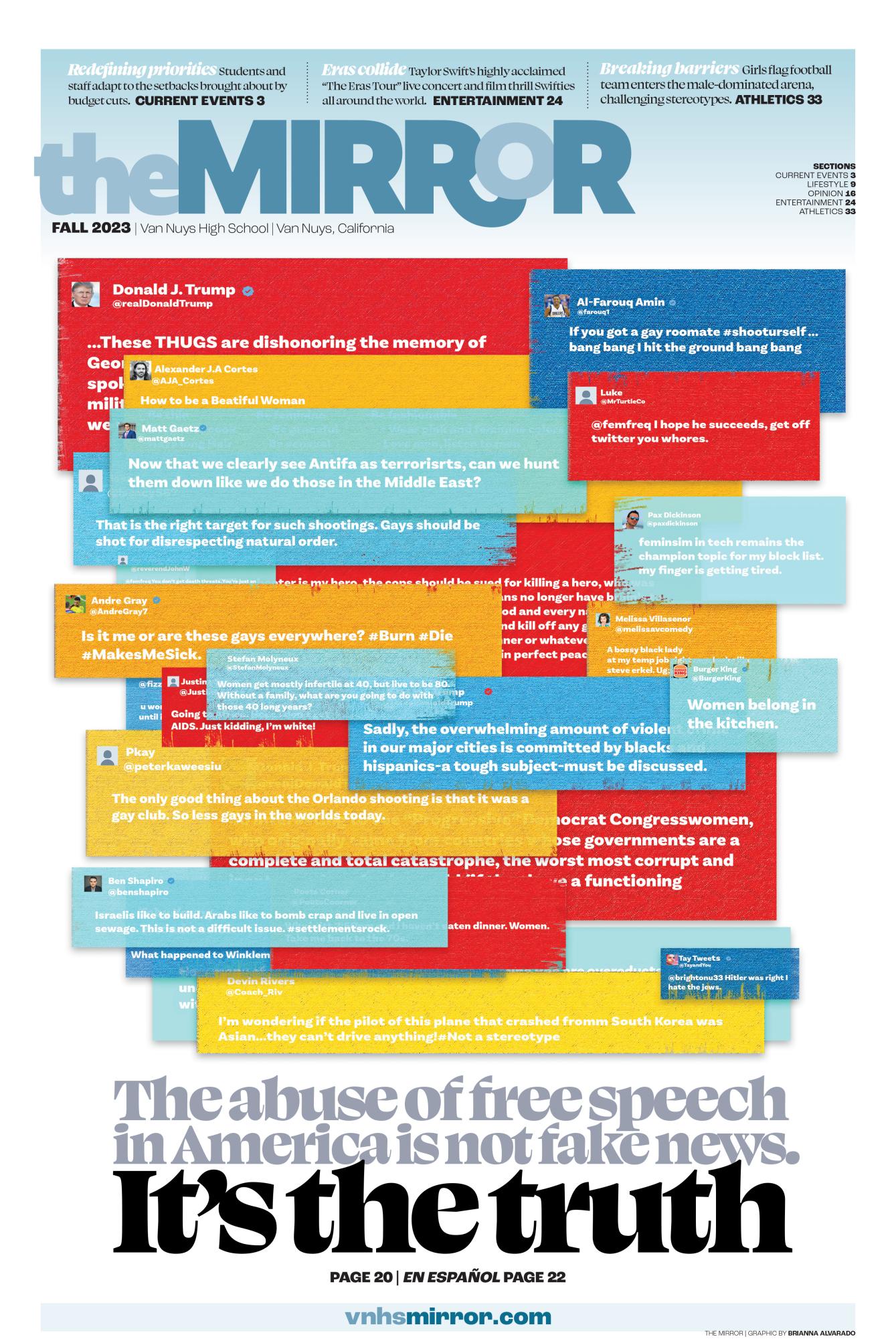No ‘Common Yardstick’?
An example of how an SAT Adversity score would look like to admission officers.
May 31, 2019
College Board has introduced an SAT adversity score designed to place students’ SAT scores in context with their socioeconomic backgrounds.
The non-profit organization will use an index which considers many factors, including a student’s high school and neighborhood, in order to give colleges context on how privileged a student is. The score is on a scale of one to 100, one being the least disadvantaged and 100 being the most disadvantaged.
The system had been used by 50 colleges and universities over the past several years as a test run but will be expanded to 150 colleges and universities later this year, and available to all in 2020.
The SAT has long been criticized for having scores that correlated with the student’s wealth; wealthier students tested higher than lower-income students.
The index will show admission officers crime rate, poverty rate, housing values and vacancy rate within the neighborhood of a student. It will also allow them to view a student’s family’s median income, education level, percentage of single parents and ESL (English as a Second Language).
When looking at a student’s high school environment, officers will be able to view the school’s senior class size, number of students receiving free or reduced lunch, percentage of seniors taking AP courses, average number of AP Exams taken, average AP score from that high school, and the number of unique AP Exams administered at that high school.
Using this tool, admission officers can view a student’s academic accomplishment in context of where they live and learn.
Students however, cannot view their adversity score.
This, along with other data included in the score, makes many skeptical with the change.
Magoosh, a test-prep company, believes it is important for parents and students to view adversity scores to address concerns and correct mistakes.
However, the score is something students can do nothing about.
Robert Schaeffer, public education director of FairTest and longtime critic of the College Board, believes the index demonstrated that the SAT is not a ‘common yardstick’ as College Board claims it to be.
On the other end of the spectrum, some universities have found the index helpful.
John Barnhill, assistant vice president for enrollment management at Florida State University, says admission officers have found the information helpful and have admitted disadvantaged students they otherwise would not have.












